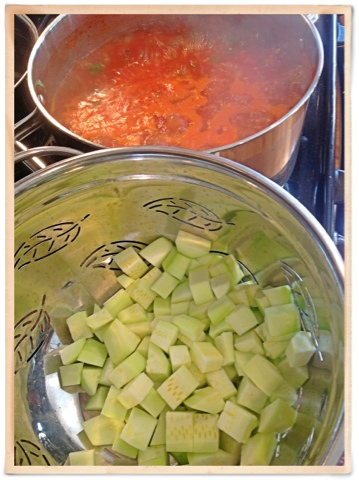Three summers ago, I planted some herbs in my vegetable garden as they attract the good insects, like bees. They are so fragrant and so pretty next year I believe I will transplant some of them into my flower gardens. The thyme would look so lovely around the bed of my roses. I thought I would share with you the herbs I have planted and some uses for them.
The basil, parsley, and rosemary must be brought indoors as they cannot tolerate the cold winters, so I grow them in the garden and in pots that can be brought indoors.
 Oregano is considered a Latin-American herb that is closely related to the mint and marjoram family. It is considered the "pizza" herb. I add it to most of my tomato sauces, taco meat, stews, and lamb. It is also known to help "cure" the cold or flu and can help with stomach upset.
Oregano is considered a Latin-American herb that is closely related to the mint and marjoram family. It is considered the "pizza" herb. I add it to most of my tomato sauces, taco meat, stews, and lamb. It is also known to help "cure" the cold or flu and can help with stomach upset.Sage is native to the Mediterranean. Most think of it as the "Thanksgiving" herb. It is a rich savory herb with hints of pepper that goes beautifully with poultry or pork. Sage has many more benefits then you would really think. It is an anesthetic for the skin, treats respiratory tract and stomach disorders and has shown to treat Alzheimer's disease.
Thyme is of the Eastern Mediterranean and used in French and Italian cooking. This herb is a powerhouse with it's fragrant pungent slightly minty flavor. It is fabulous with any meat; I especially love it in beef stew. Armenians make tea from its leaves, called Urc. A wreath made of thyme will clear the air in your home. It is widely known for its antibacterial and anti-fungal properties. I use it when I get bronchitis; it clears the lungs.
Basil is from Southeast Asia and widely used in Italian cooking. It has a minty-lemon flavor with a hint of cloves or liquorice. It is a must have for spaghetti sauces and makes a fabulous pesto when mixed with pine nuts, Parmesan cheese, and olive oil. It's best friend is the tomato, but it also goes well with fish, poultry, soups and stews. It has antimicrobial and anti-fungal properties, which helps with treatment of asthma and diabetes.
Marjoram is from Turkey. It has a pine and citrus flavor that really enhances Italian and Mediterranean dishes; especially soups, stews, and sauces. I use it almost every single time I use oregano because they are so closely related. They seem to balance each other out and make the flavor more rounded. It is great for stomach ailments.

Dill Weed is widely used in Polish, German, Norway, and Russian cooking. It has a bright lemon tang. I use it with creamed cucumbers, German potato salad, pickles, fish and with lamb. It is fabulous when mixed with yogurt or sour cream. I always add it to my Gyro Cucumber sauce. It calms stomach gases.
Rosemary is a Mediterranean herb that carries a fragrant bouquet of sweet evergreen. Its green citrus (orange) aroma is a fabulous addition to pork, poultry, beef, fish, and lamb, as well as soups and stews. It really adds depth of flavor to beef stew and to roasted turkey breasts. When browned, it takes on the flavor of mustard which is an excellent pairing with ham. Breathe in a rosemary infused steam bath and your lungs will almost instantly clear out. It is great for clearing up acne and other skin blemishes. At Christmas time hang a rosemary wreathe in your home or better yet, give one away as a gift. It is a symbol of love and loyalty.
Parsley
is a Mediterranean herb. I have Italian parsley, not the curly leaf
parsley variety. The Italian parsley has better flavor and is full of
vitamin C and K. I use it in almost everything from adding it to salads
to chicken noodle soup. It has a green flavor that adds depth and
moisture to hamburgers, turkey-burgers, or lamb-burgers. It's part of Grandmother's "penicillin soup"; chicken soup made with loads of garlic and freshly chopped parsley will calm the worst cold.
Lessons Learned:
The important thing I have learned about herbs is to approach them like I do a wine tasting; look at them, smell them, taste them and experiment with them. See how they react with one ingredient or another. Taste the before and after. Add a little, taste, add a little more. Get to know your herbs, the ones you like, the ones your family likes and use them. They will turn ordinary bland chicken into a culinary masterpiece that is ALL YOUR OWN making!
Enjoy!




















































